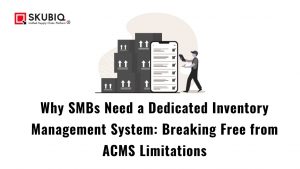In the fast-paced world of warehouse management, every square foot of space matters. Warehouse slotting is a crucial aspect of inventory management that can significantly impact the efficiency and profitability of your operations. By strategically organizing and positioning your inventory within the warehouse, you can streamline processes, minimize picking and replenishment times, and ultimately enhance overall productivity. In this comprehensive guide, we’ll delve into what warehouse slotting entails and provide actionable steps on how to implement it effectively in your business.
What is Warehouse Slotting?
Warehouse slotting refers to the systematic arrangement of products within a warehouse based on various factors such as size, weight, demand, and storage requirements. The primary goal of slotting is to optimize the layout of the warehouse to maximize efficiency and minimize operational costs. By assigning the most suitable storage locations to each item, slotting aims to reduce unnecessary movement within the warehouse, streamline picking processes, and enhance overall warehouse efficiency.
Key Factors Influencing Warehouse Slotting:
1. Product Characteristics
You wouldn’t set sail without a map, would you? Similarly, in the world of International Ecommerce, having a solid ecommerce strategy is your roadmap to success. It’s not just about selling products; it’s about understanding your target audience, market trends, and competition to stay ahead of the game.
2. Demand Patterns
Analyzing historical sales data and demand forecasts helps in identifying fast-moving items that should be placed in easily accessible locations within the warehouse. By positioning high-demand products closer to the shipping area, you can reduce picking times and improve order fulfillment speed.
3. Storage Requirements
Different products may have unique storage requirements, such as temperature control, humidity levels, or special handling instructions. Slotting takes these factors into account to ensure that items are stored in suitable environments to maintain their quality and integrity.
4. Seasonal Variations
For businesses that experience seasonal fluctuations in demand, dynamic slotting strategies may be necessary to adapt to changing inventory needs. By periodically reassessing and adjusting the slotting plan, businesses can optimize space utilization throughout the year.
How to Implement Warehouse Slotting in Your Business
Implementing warehouse slotting requires careful planning, analysis, and execution. Here’s a step-by-step guide to help you incorporate slotting into your warehouse management practices effectively:
1. Conduct a Comprehensive Inventory Analysis
Begin by thoroughly assessing your existing inventory and gathering relevant data on product characteristics, demand patterns, and storage requirements. Utilize warehouse management software to compile and analyze this information, allowing you to identify opportunities for slotting optimization.
2. Define Slotting Criteria
Establish clear criteria for slotting based on factors such as product dimensions, weight, velocity (rate of sales), and storage conditions. Develop a prioritization system to categorize items according to their importance and assign appropriate storage locations accordingly.
3. Map Warehouse Layout
Create a detailed map of your warehouse layout, including shelving units, racks, aisles, and storage zones. Use this map as a visual guide to plan the placement of products within the facility, ensuring optimal use of space and efficient workflow.
4. Implement Slotting Strategies
Utilize various slotting strategies such as ABC analysis, velocity-based slotting, and zone picking to organize inventory effectively. ABC analysis involves categorizing items into three groups based on their contribution to overall revenue (A-items for high-value products, B-items for moderate value, and C-items for low-value or slow-moving items).
5. Continuously Monitor and Adjust
Warehouse slotting is not a one-time task but an ongoing process that requires regular monitoring and adjustment. Continuously analyze inventory management metrics such as order picking time, replenishment frequency, and storage utilization to identify areas for improvement and refine your slotting strategies accordingly.
Warehouse Improvement Ideas to Enhance Slotting Efficiency:
1. Utilize Vertical Space
Maximize storage capacity by investing in vertical shelving systems and mezzanine floors to make efficient use of overhead space.
2. Implement Cross-Docking
Streamline outbound and inbound operations by implementing cross-docking processes, where incoming goods are immediately transferred to outbound docks for shipment without storage.
3. Utilize Automation
- Incorporate automation technologies such as conveyor systems, robotic pickers, and automated guided vehicles (AGVs) to optimize material flow and reduce labor-intensive tasks.
4. Optimize Pick Paths
Analyze order picking routes and rearrange slotting layouts to minimize travel distances and reduce picking times.
5. Implement Slotting Software
Invest in advanced warehouse management software with slotting optimization capabilities to automate inventory management tasks and streamline slotting processes.
By implementing strategic warehouse slotting practices and embracing continuous improvement initiatives, businesses can unlock significant efficiency gains, reduce operating costs, and enhance overall competitiveness in today’s dynamic marketplace. Start optimizing your warehouse operations today and reap the benefits of effective slotting for years to come.
FAQs: Frequently Asked Questions
1. What is warehouse slotting, and why is it important for my business?
Warehouse slotting involves strategically organizing inventory to optimize space, streamline operations, and enhance efficiency. It assigns specific storage locations based on factors like size, weight, and demand. This process minimizes picking times, reduces labor costs, and boosts overall productivity.
2. How does warehouse slotting benefit my business?
Warehouse slotting brings several benefits:
- Improved Efficiency: Organizing inventory strategically reduces unnecessary movement, enhancing efficiency.
- Cost Savings: Optimal slotting cuts labor costs by reducing travel distances and search time.
- Enhanced Accuracy: Designated storage locations reduce errors and improve inventory accuracy.
- Better Space Utilization: Maximizing storage space minimizes wasted areas, optimizing warehouse facilities.
3. How do I determine the best slotting strategy for my warehouse?
The best strategy depends on factors like inventory characteristics and demand patterns. Analyzing inventory, using warehouse management software, and considering product dimensions help determine the most suitable strategy. Techniques such as ABC analysis and velocity-based slotting can further optimize inventory placement.
4. Is warehouse slotting a one-time process, or does it require ongoing maintenance?
Integration complexities, data migration issues, and resistance to change are some common challenges businesses may face when implementing WMS. However, with proper planning and support, these challenges can be overcome.
5. Can warehouse management software help with warehouse slotting?
Yes, warehouse management software (WMS) plays a crucial role. Advanced WMS solutions offer features like inventory analysis and slotting optimization algorithms. These tools enable informed decisions about inventory placement and automate slotting tasks, improving accuracy and overall warehouse efficiency.



